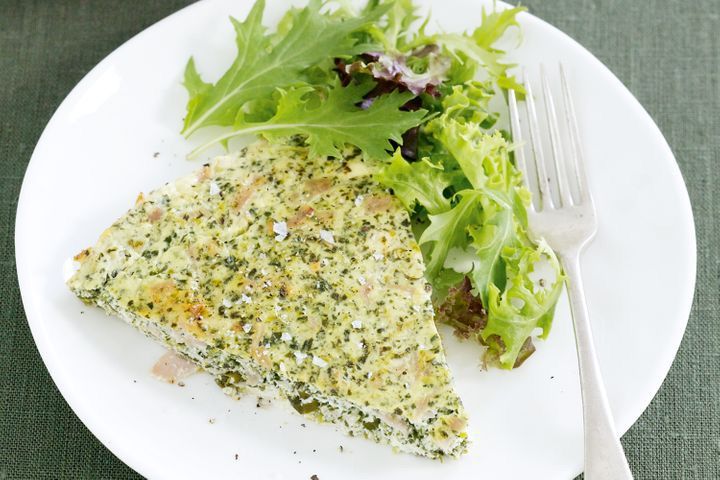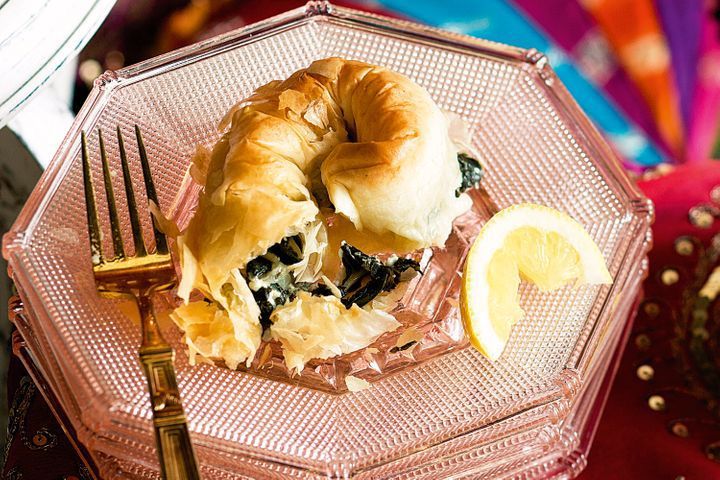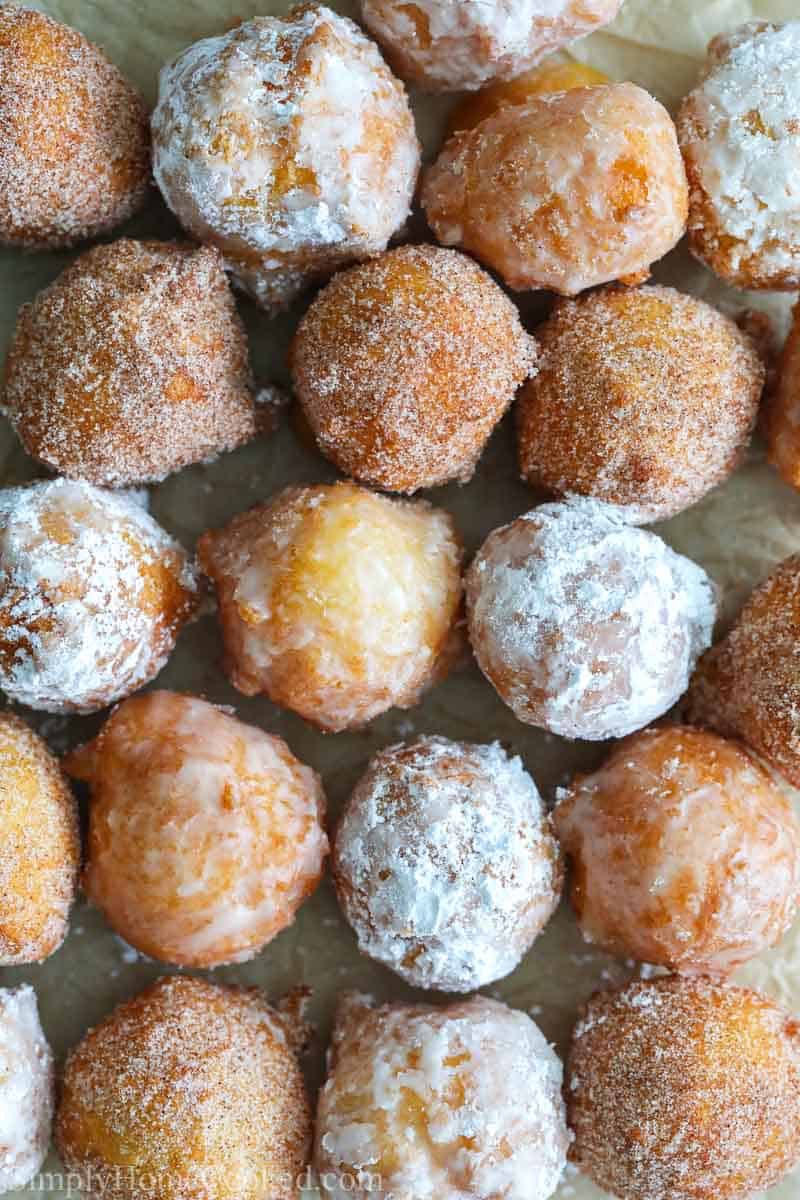17
Gia:
This is what the daughters team made.




Gia:
This is what the dads team made.
Rose
"Ok guys I am going to be your judge."
Everyone:
"Yay."
Rose:
"I am going to be in the tasting room see you."
After testing pies later
Rose:
"I am sorry dads but your daughters won."
Dads:
"Yay."
Rose:
"Good now our next challenge are that you have to make doughnuts but 2 doughnuts and 2 donuts hones you will have 40 minutes your time strat now."
Harry:
"Ok love what our doughnuts are called."
Hia:
"Just called doughnuts."
Step 1
Heat the milk until it is warm but not hot, about 90 degrees. In a large bowl, combine it with the yeast. Stir lightly, and let sit until the mixture is foamy, about 5 minutes.
Step 2
Using an electric mixer or a stand mixer fitted with a dough hook, beat the eggs, butter, sugar and salt into the yeast mixture. Add half of the flour (2 cups plus 2 tablespoons), and mix until combined, then mix in the rest of the flour until the dough pulls away from the sides of the bowl. Add more flour, about 2 tablespoons at a time, if the dough is too wet. If you're using an electric mixer, the dough will probably become too thick to beat; when it does, transfer it to a floured surface, and gently knead it until smooth. Grease a large bowl with a little oil. Transfer the dough to the bowl, and cover. Let rise at room temperature until it doubles in size, about 1 hour.
Step 3
Turn the dough out onto a well-floured surface, and roll it to ½-inch thickness. Cut out the doughnuts with a doughnut cutter, concentric cookie cutters or a drinking glass and a shot glass (the larger one should be about 3 inches in diameter), flouring the cutters as you go. Reserve the doughnut holes. If you're making filled doughnuts, don't cut out the middle. Knead any scraps together, being careful not to overwork, and let rest for a few minutes before repeating the process.
Step 4
Put the doughnuts on two floured baking sheets so that there is plenty of room between each one. Cover with a kitchen towel, and let rise in a warm place until they are slightly puffed up and delicate, about 45 minutes. If your kitchen isn't warm, heat the oven to 200 at the beginning of this step, then turn off the heat, put the baking sheets in the oven and leave the door ajar.
Step 5
About 15 minutes before the doughnuts are done rising, put the oil in a heavy-bottomed pot or Dutch oven over medium heat, and heat it to 375. Meanwhile, line cooling racks, baking sheets or plates with paper towels.
Step 6
Carefully add the doughnuts to the oil, a few at a time. If they're too delicate to pick up with your fingers (they may be this way only if you rose them in the oven), use a metal spatula to pick them up and slide them into the oil. It's O.K. if they deflate a bit; they'll puff back up as they fry. When the bottoms are deep golden, after 45 seconds to a minute, use a slotted spoon to flip; cook until they're deep golden all over. Doughnut holes cook faster. Transfer the doughnuts to the prepared plates or racks, and repeat with the rest of the dough, adjusting the heat as needed to keep the oil at 375. Glaze or fill as follows, and serve as soon as possible.
Harry:
"Ok love what are we making next?"
Gia:
"It called doughnut dough."
STEP 1
Put 150g water and all the dough ingredients, apart from the butter, into the bowl of a mixer with a beater paddle. Mix on a medium speed for 8 mins or until the dough starts coming away from the sides and forms a ball. Turn off the mixer and let the dough rest for 1 min.
STEP 2
Start the mixer up again on a medium speed and slowly add the butter to the dough - about 25g at a time. Once it is all incorporated, mix on high speed for 5 mins until the dough is glossy, smooth and very elastic when pulled.
STEP 3
Cover the bowl with cling film or a clean tea towel and leave to prove until it has doubled in size. Knock back the dough in the bowl briefly, then re-cover and put in the fridge to chill overnight.
STEP 4
The next day, take the dough out of the fridge and cut it into 50g pieces (you should get about 20).
STEP 5
Roll the dough pieces into smooth, tight buns and place them on a floured baking tray, leaving plenty of room between them, as you don't want them to stick together while they prove.
STEP 6
Cover loosely with cling film and leave for 4 hrs or until doubled in size. Fill your deep-fat fryer or heavy-based saucepan halfway with oil. Heat the oil to 180C.
STEP 7
When the oil is heated, carefully slide the doughnuts from the tray using a floured pastry scraper. Taking care not to deflate them, put them into the oil. Do 2-3 per batch, depending on the size of your fryer or pan.
STEP 8
Fry for 2 mins each side until golden brown - they puff up and float, so you may need to gently push them down after about 1 min to help them colour evenly.
STEP 9
Remove the doughnuts from the fryer and place them on kitchen paper.
STEP 10
Toss the doughnuts in a bowl of caster sugar while still warm. Repeat the steps until all the doughnuts are fried, but keep checking the oil temperature is correct - if it is too high, they will burn and be raw in the middle; if it is too low, the oil will be absorbed into the doughnuts and they will become greasy. Set aside to cool before filling.
STEP 11
To fill the doughnuts, make a hole with a small knife in the crease of each one, anywhere around the white line between the fried top and bottom.
STEP 12
Fill a piping bag with your filling and pipe into the doughnut until nicely swollen - 20-50g is the optimum quantity, depending on the filling; cream will be less, because it is more aerated. After filling, the doughnuts are best eaten straight away, but will keep in an airtight tin.
STEP 13
Fillings
Custard filling: Try out Justin's custard filling and, if you like, add different flavours to the custard as follows...
Brown sugar: Replace the caster sugar with half soft dark brown sugar and half light brown sugar. You can add chopped stem ginger to the finished custard, or some hazelnut praline. Finish with half the quantity of cream.
Chocolate: Whisk 150g dark (70%) chocolate into the milk. Finish with half the cream.
Coffee: Add 4 tbsp of freshly ground strong coffee to the milk.
Malt & vanilla: Mix 2 tbsp of powdered malt into the sugar, and 2 tbsp of liquid malt into the milk.
Saffron: Add a good pinch of saffron to the milk. Finish with half the quantity of cream.
Violet custard: Add 3 tsp of violet extract and 3 tbsp of violet liqueur to the finished custard. Sprinkle sugared violets and crushed Parma Violet sweets over the top of the filled doughnuts.
Gia:
I am sorry but I can't get pictures of me and Harry doughnuts. "How let make some holes."
Harry:
"What are we making first love."
Gia:
"Vermont Doughnut Holes."
Pour the oil 1" deep into a 10" skillet that's about 2 1/2" deep or use an electric frying pan. You want the oil to be about 1" deep. Start to heat the oil to 350°F while you're preparing the doughnut batter.
Whisk together the dry ingredients. In a separate bowl, whisk together the milk and egg.
Pour the milk/egg into the bowl with the dry ingredients, stirring briefly; then add the melted butter, stirring to make a thick batter/soft dough.
When the oil has come up to temperature, use a cookie scoop (or a spoon) to drop balls of batter into the hot oil. This recipe will make 2" doughnut holes using a tablespoon cookie scoop, and dropping in balls of dough about as big as an undersized ping pong ball; or 1 1/2" holes, using a teaspoon cookie scoop, and dropping in balls of dough about as big as a chestnut.
Fry the doughnut holes for 2 minutes on the first side, or until they're deep brown. Some of them may turn themselves over; that's OK, just use a pair of tongs to turn them back. After 2 minutes, turn the holes over, and fry for an additional 2 minutes (for the larger doughnut holes), or 1 1/2 minutes (for the smaller ones).
Transfer the doughnut holes to a baking sheet lined with paper towels to drain and cool.
Serve warm or at room temperature, sprinkled with sugar and/or dipped in maple syrup or honey.
Timer man:
"10 minutes left people."
Harry:
"What are we making love."
Gia:
"Cinnamon Baked Doughnut Holes."
Preheat the oven to 325°F. Lightly grease the top and bottom parts of a doughnut hole pan. If you don't have a doughnut hole pan, a mini muffin pan will work well; see "tips from our bakers," at left below.
In a medium-sized mixing bowl, beat together the butter, vegetable oil, and sugars until smooth.
Add the eggs, beating to combine.
Stir in the baking powder, baking soda, salt, nutmeg, and vanilla.
Stir the flour into the butter mixture alternately with the milk, beginning and ending with the flour and making sure everything is thoroughly combined.
Spoon the batter evenly into the prepared pan, filling the cups full; the batter will mound up a tiny bit. Place the top on the pan, and lock it in place with the clips.
Bake the doughnut holes for 15 to 17 minutes, or until they're a pale golden brown and a cake tester inserted into the middle of one of the center holes comes out clean.
Loosen the edges of the holes if necessary, and gently return them onto a rack to cool briefly. Grease the pan again, and bake as many more batches as necessary to use up the batter.
Place the cinnamon sugar in a paper bag, and add the doughnut holes a few at a time. Shake gently to coat the holes with the cinnamon sugar. If the holes have cooled too much and aren't holding the sugar, spritz them very lightly with a bit of water, then shake.
Serve doughnuts warm or at room temperature. Store for several days at room temperature, lightly covered; freeze for longer storage.


Gia:
This is what we made.




Gia:
This is team drummers.




Bạn đang đọc truyện trên: AzTruyen.Top